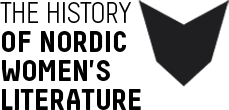Social criticism and new consciousness in Norwegian women’s literature of the 1970s.
Tag: 1960-1970
Based on the new research in women’s studies being conducted at Danish universities in the 1970s, a league of female reviewers arose who wrote about new – and old – women’s literature. They functioned as the propagators of reader experiences as well as the new norm-setters with regard to interpreting women’s literature.The notion of the importance of the woman’s experience, in particular, became an artistic driving force. It led to the creation both of the confessional genre, in which the subjective experience served as a way for the writer and the reader to conquer identity and ‘I’-power, as well as of emancipation literature, in which experience paradigmatically leads to awareness, resistance, and liberation, from marriage or from mental self-oppression.
The works of Danish author and controversialist Suzanne Brøgger tell an unmistakable tale about the dark side of revolt and the consequences of NO. Efter orgiet, in which the characters Organ, Rigor, Vulva, and Mortis perform an incestuous, Oedipal death dance in a Brøggerean version of the Greek tragedy’s rhetoric, sparked the same shock and dismay as twenty years ago when Suzanne Brøgger wanted to free us from love.Her oeuvre began with a NO in 1973, but the publication of Ja in 1984 turned the problem from the previous books on its head, and marked Suzanne Brøgger’s popular breakthrough. Ja turns out to be an artist’s novel in which the female artist is resurrected from the burial chamber of femininity. Suzanne Brøgger’s transition from NO in 1973 to her YES in 1984 is basically about a personal journey to an authorship, an artistic way of life.
The New Women’s Forum of the 70s
Throughout her work, Inger Christensen deals with the same fundamental conditions: the organic connections of existence, gender, the body, and consciousness with nature and the cosmos – and, by virtue of language, humanity’s special status in relation to this.Art is more than just the place where these conditions are referred to and described – as in early modernism. In the work of Inger Christensen, art is also the place where existence, gender, body, and consciousness can be put into play, explored, and tested, because they form the foundation of poetic articulation.
The Danish modernism of the 1960s, of which Dorrit Willumsen was a part, had turned, in terms of cultural criticism, towards the modern consumer and mass society and its influence on the existence of the individual. Modernity in the form of commodity society removes the ‘I’ from the self, rendering it a stranger to itself.In Dorrit Willumsen’s texts, the woman is portrayed from the very beginning as the primary victim and the preferred form of expression of modernity; she is both the antithesis and the quintessence of culture. Throughout Dorrit Willumsen’s oeuvre, it is the image of women that becomes the primary symbol of the conflict between outer and inner.
Late Symbolism and Modernism in Post-war Literature
Modernism and Women in post-war Norwegian Poetry
Tora Dahl certainly paid her dues before becoming a widely read author. She began writing in her late teens but did not publish her first book until the age of forty-nine. Her real breakthrough, which greatly expanded her readership, came after the age of seventy. The first part of her eighteeen-volume autobiography appeared in 1954. It is a unique project in the history of Swedish literature.Dahl’s books span nearly an entire century. The story starts in the late nineteenth century. The long chronicle of a woman’s progress as Sweden modernises is not only a unique cultural document, its consistent feminine perspective is new, fascinating, and provocative from the standpoint of literary history. While chronicling her labyrinthine road to a successful writing career, the series also reflects her growing disillusionment. The history of a struggle to be heard.
The Finnish author Hagar Olsson’s debut from 1916 was brought out the same year as Edith Södergran’s first poetry collection. According to literary historians, the twin events marked the birth of Finland-Swedish modernism. Dagens Press (The Daily Press) hired Olsson as its literary critic in 1918, providing her with a venue to wage her celebrated campaign for ‘modernity’ in art and literature. Her entire literary project is about faith in the life force, the power of the spirit to transform the world, and the artist’s holy calling. She achieved the most significant formal renewal in her dramatic works. Olsson was largely interested in creating political theatre that preaches and agitates.The theme of “the new woman” and associated issues was more conspicuous with each novel Olsson wrote in the late 1920s and early 1930s. Her association with the group that published the radical feminist magazine Tidevarvet and with the Women´ s College for Civic Training at Fogelstad whetted her appetite for women’s issues.

